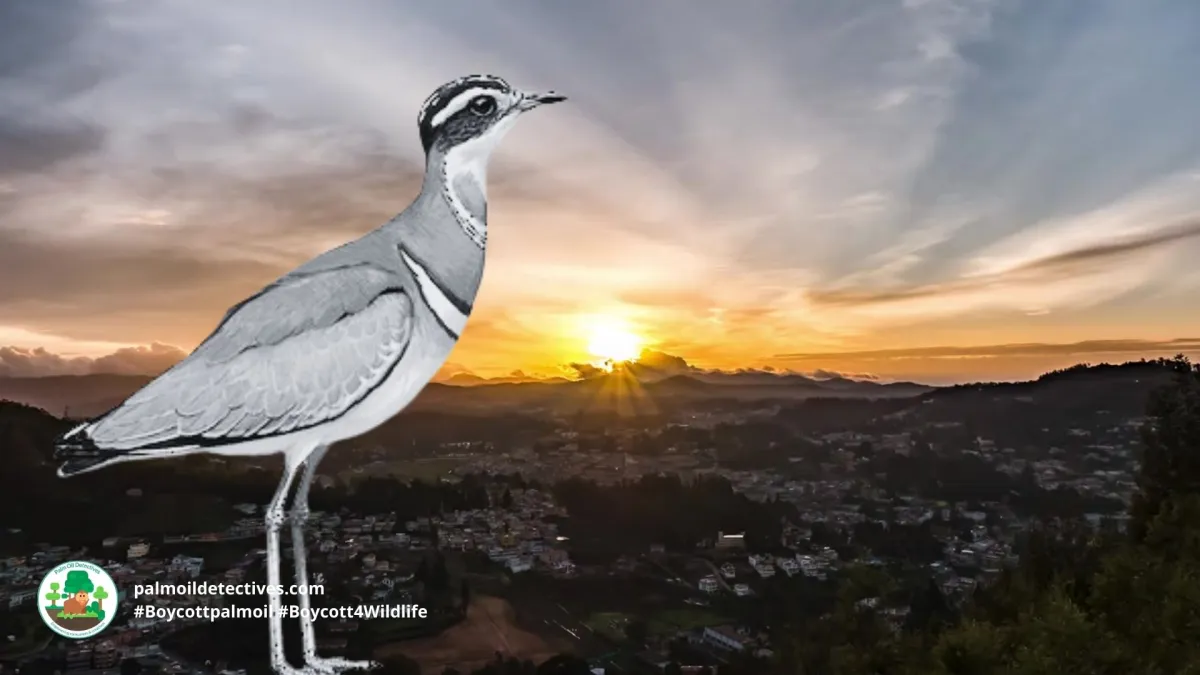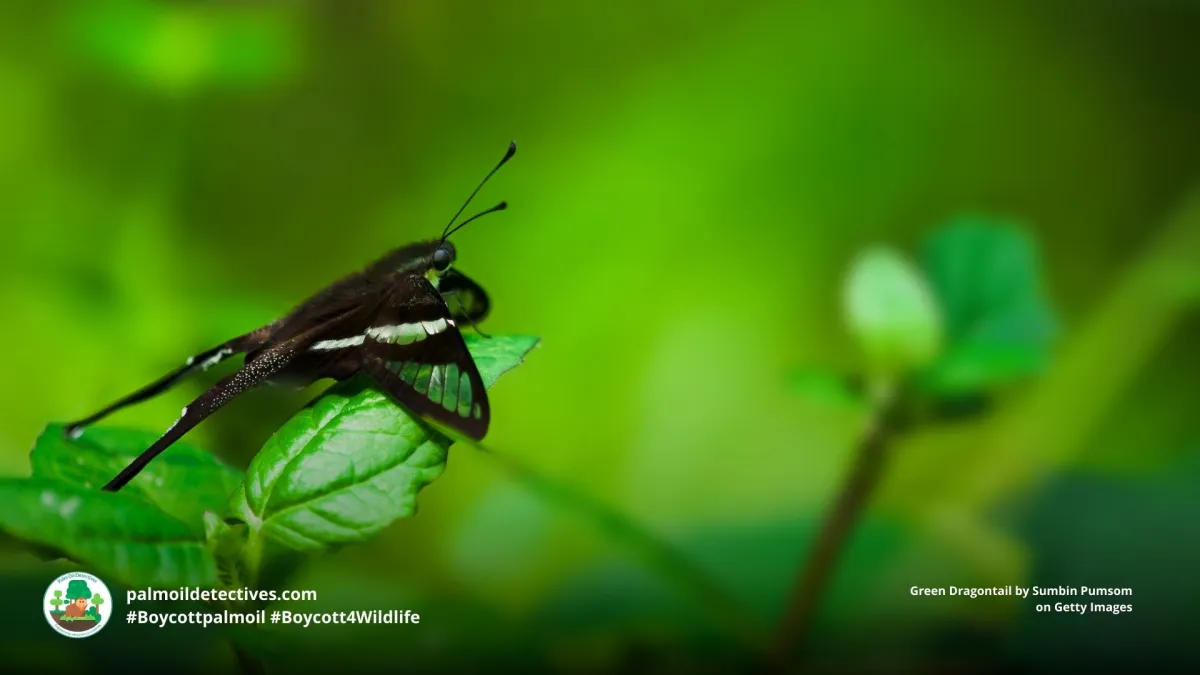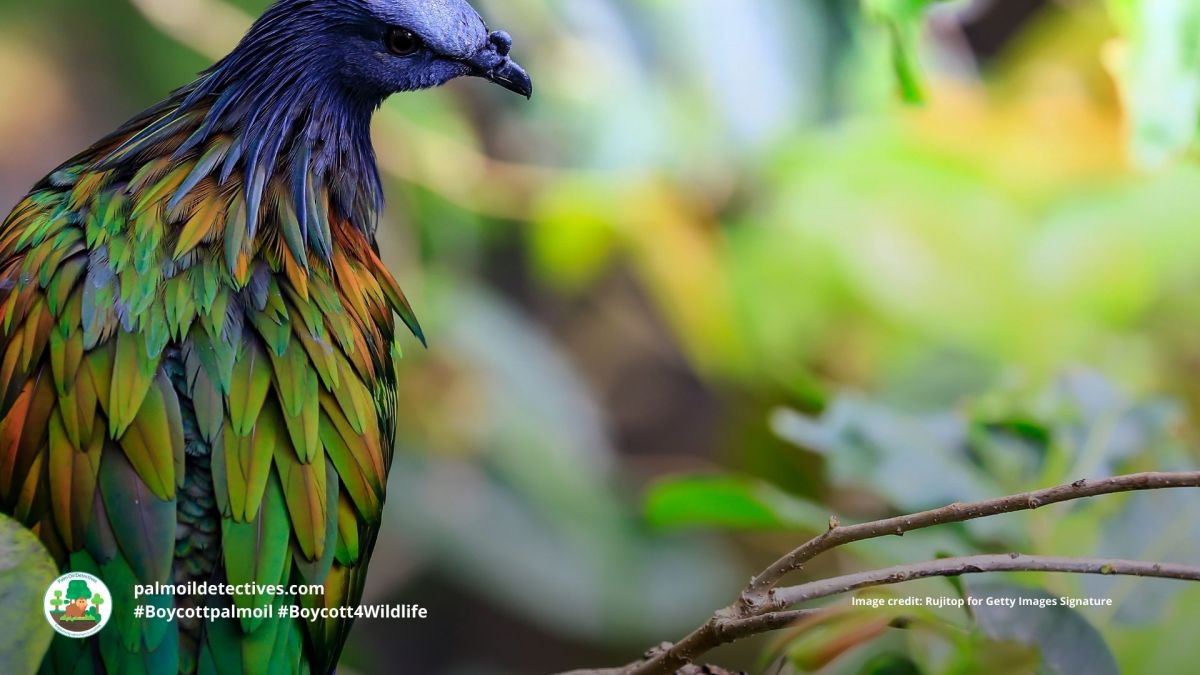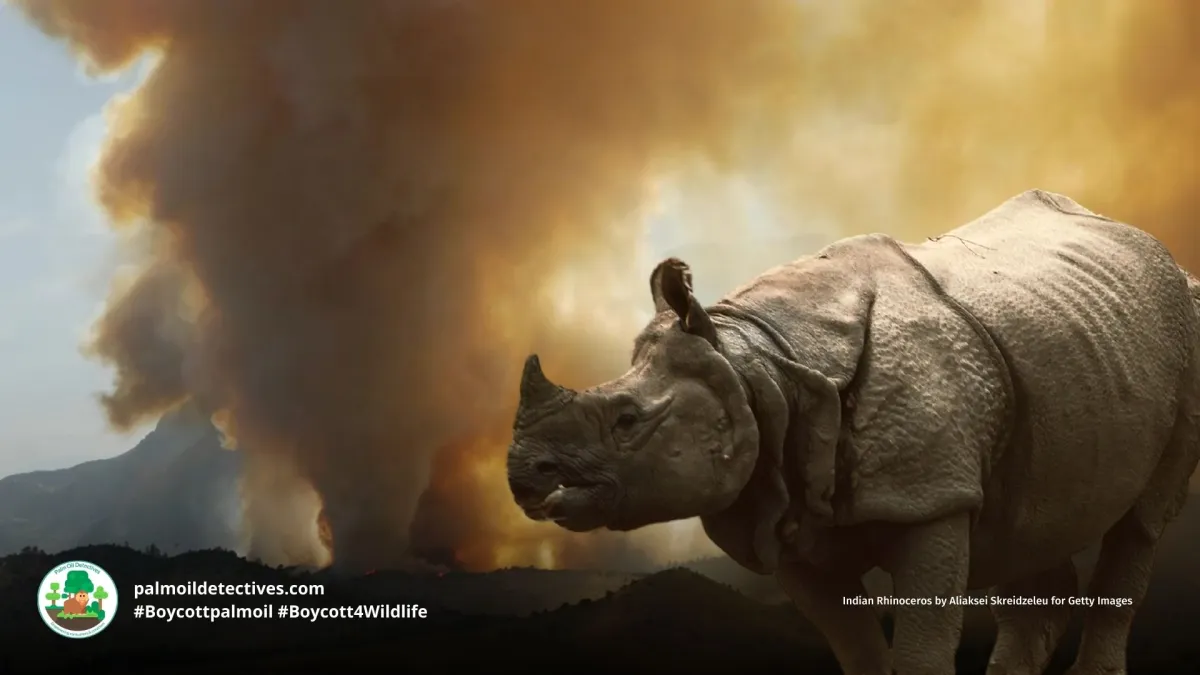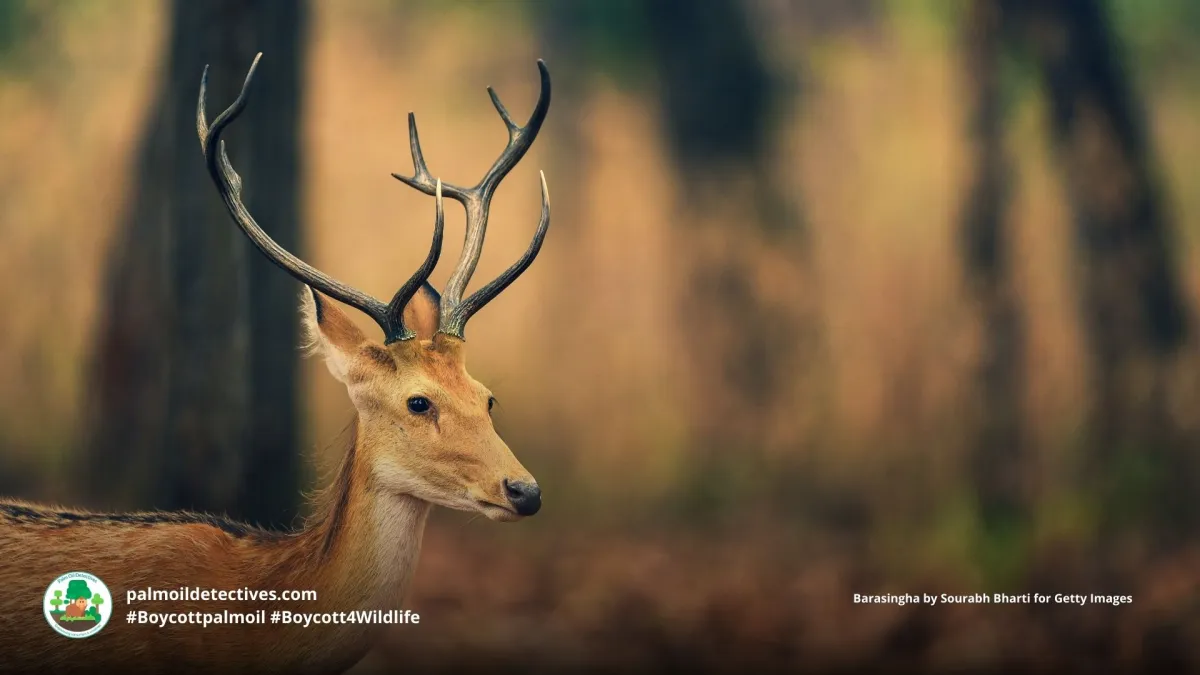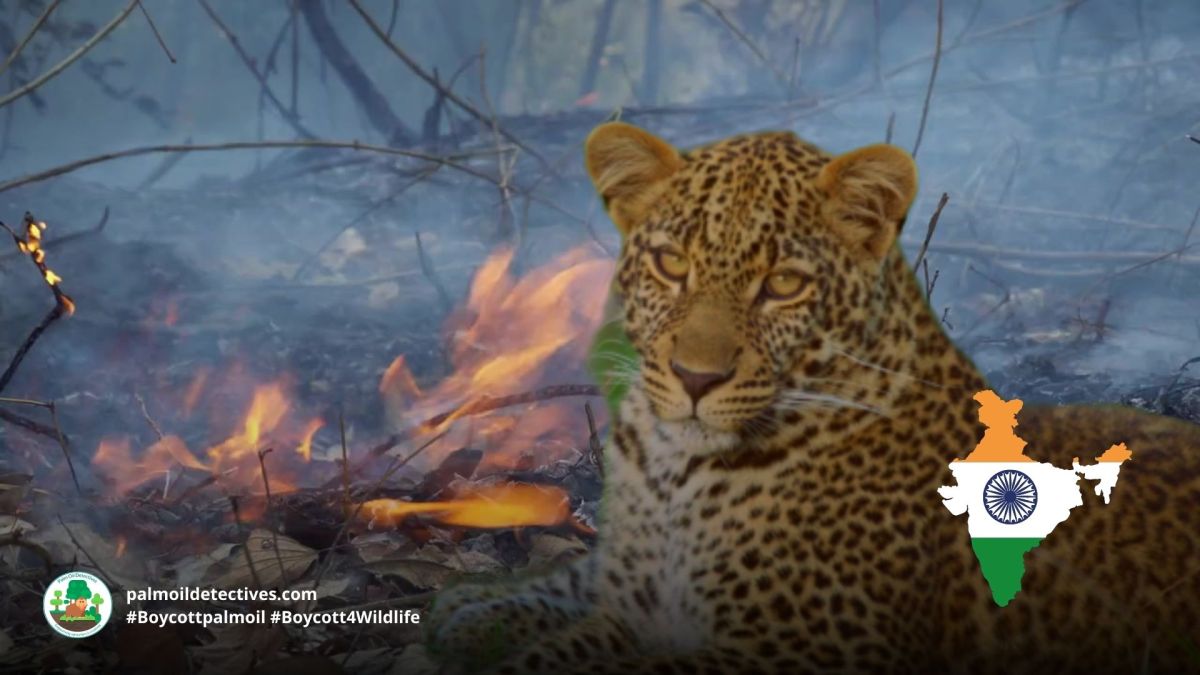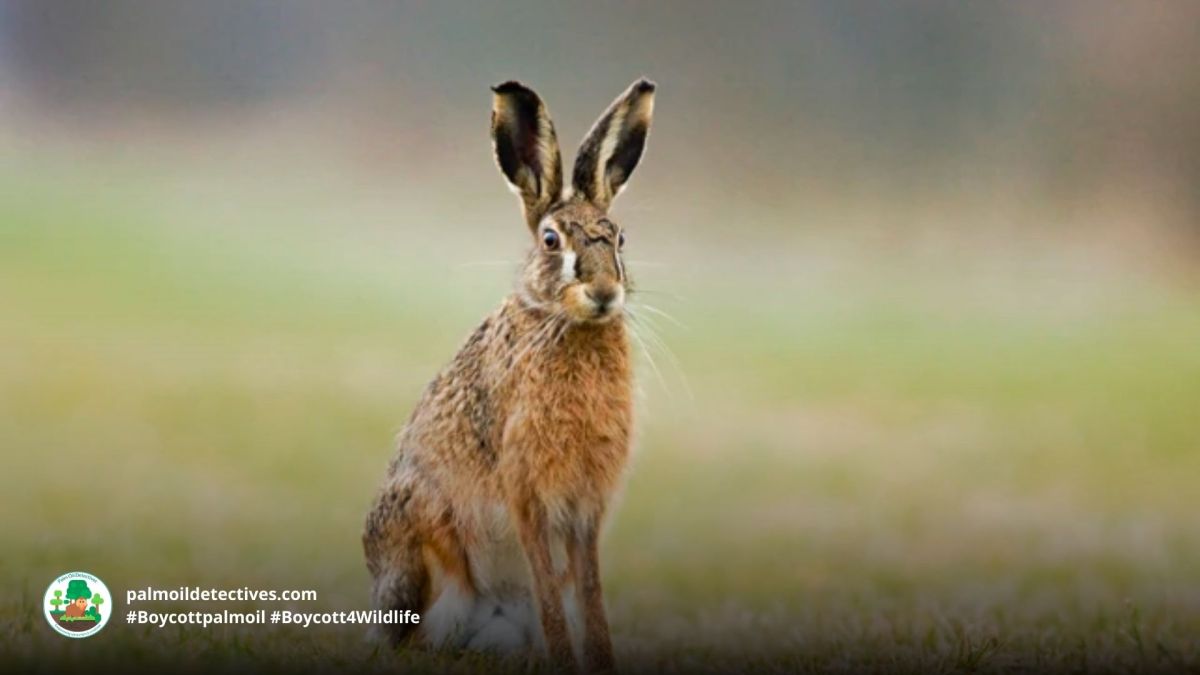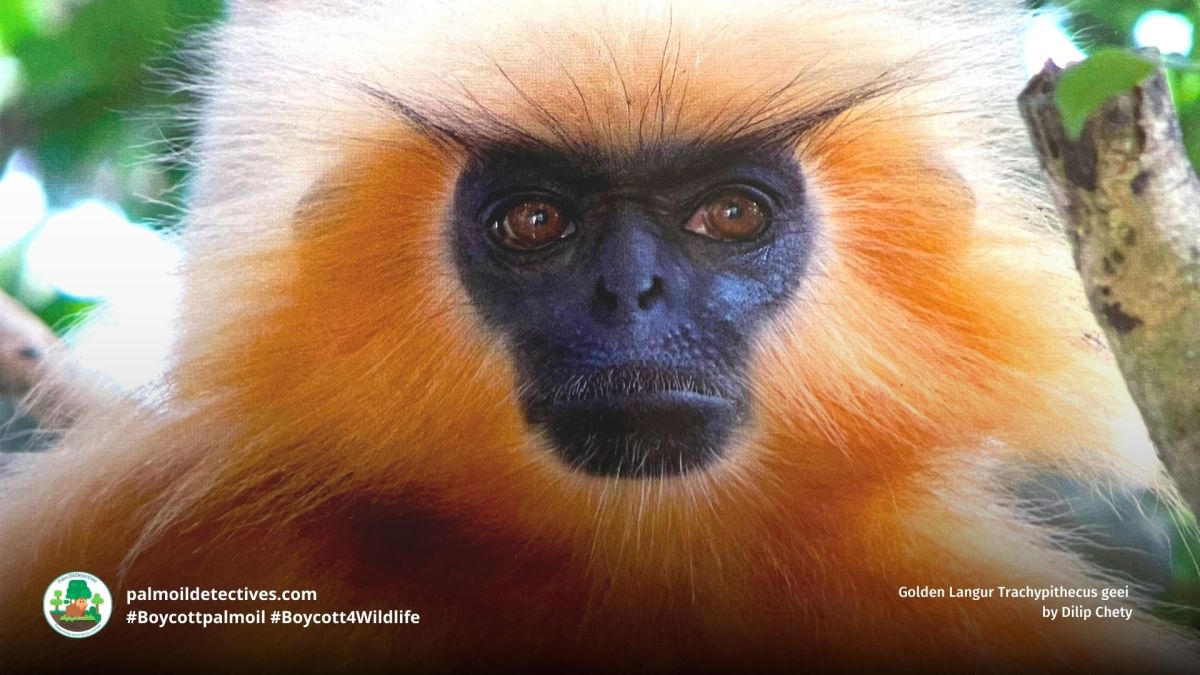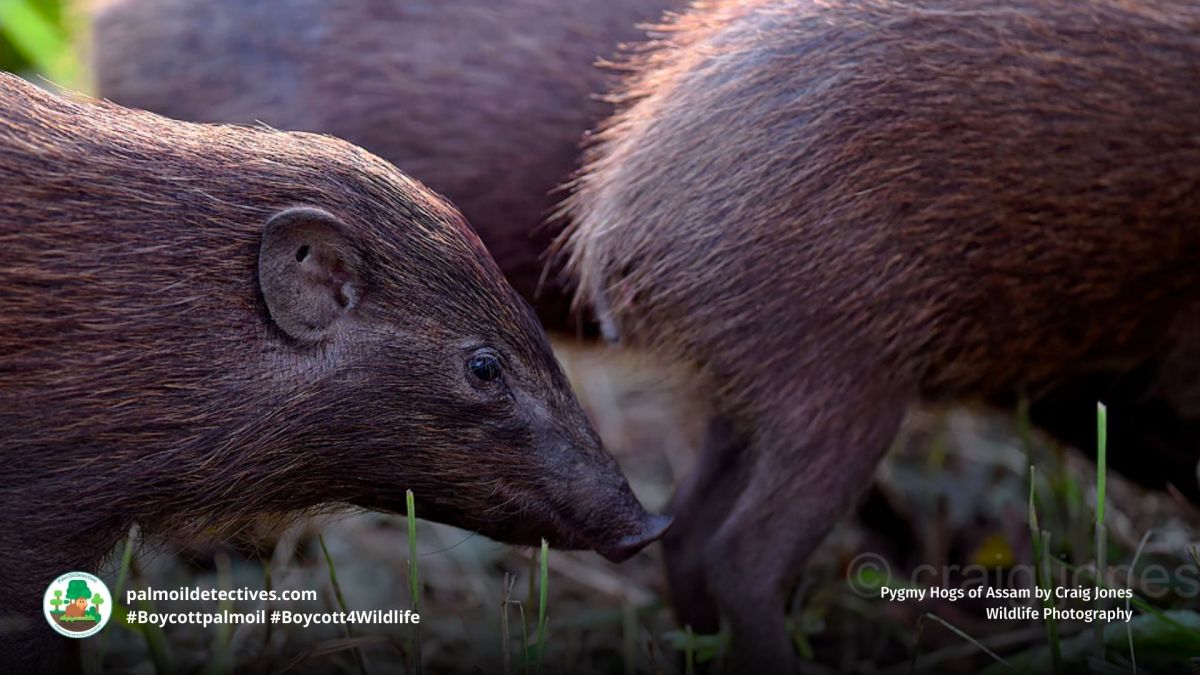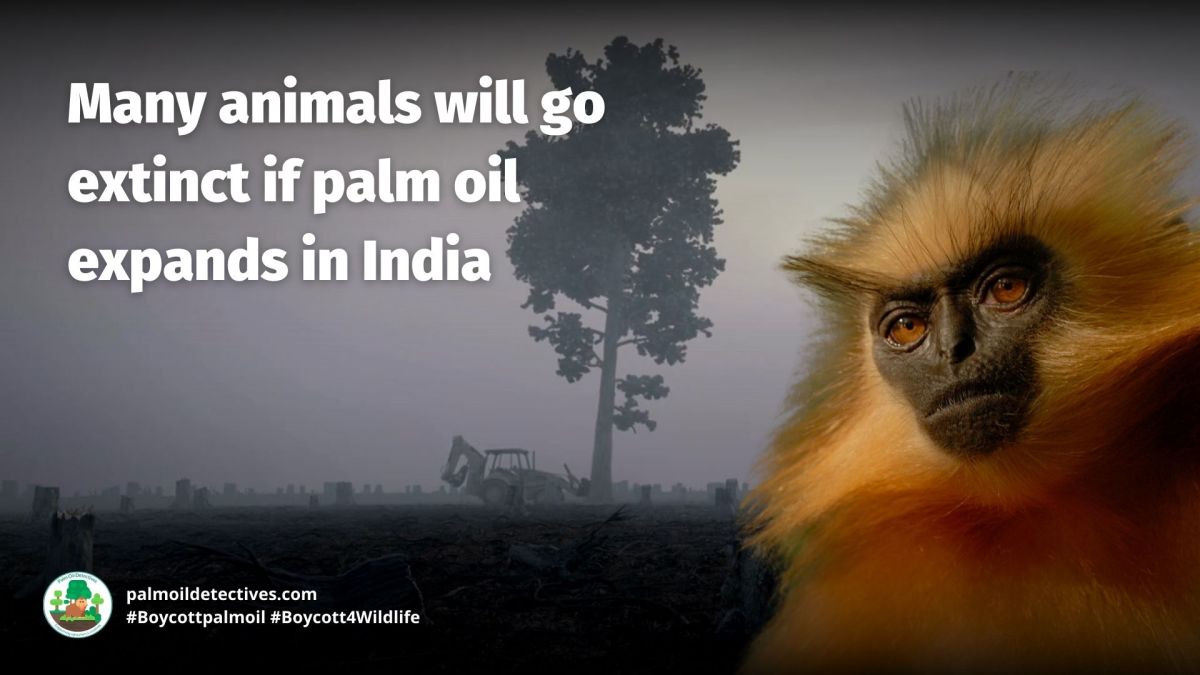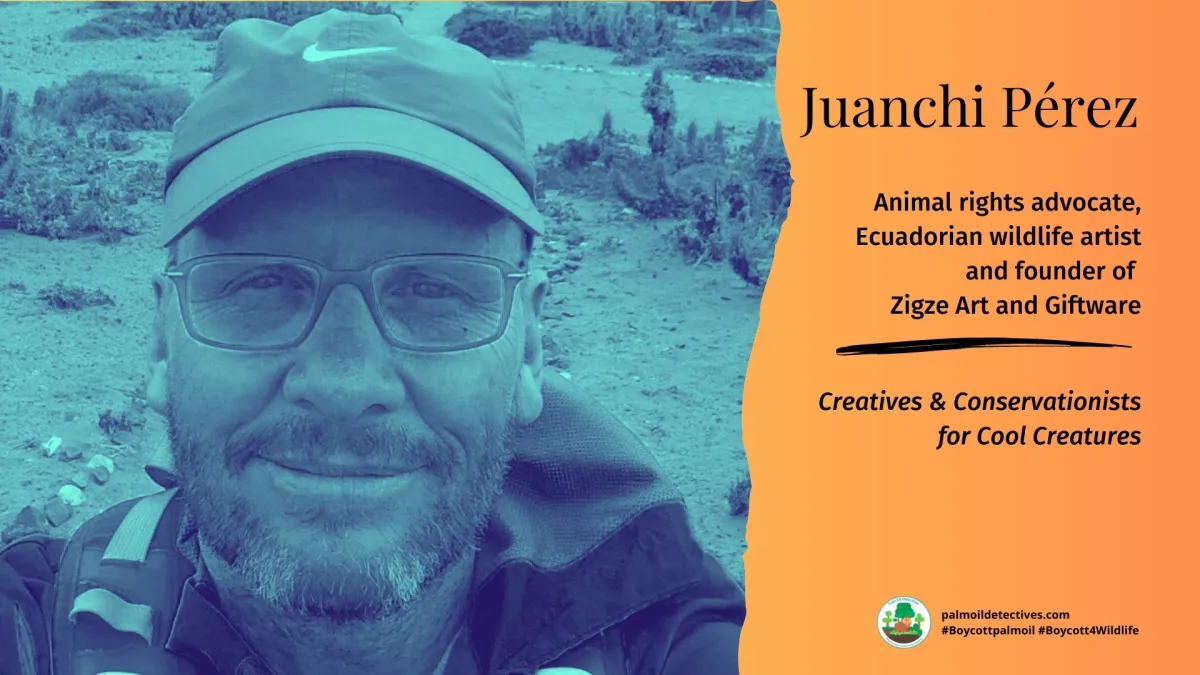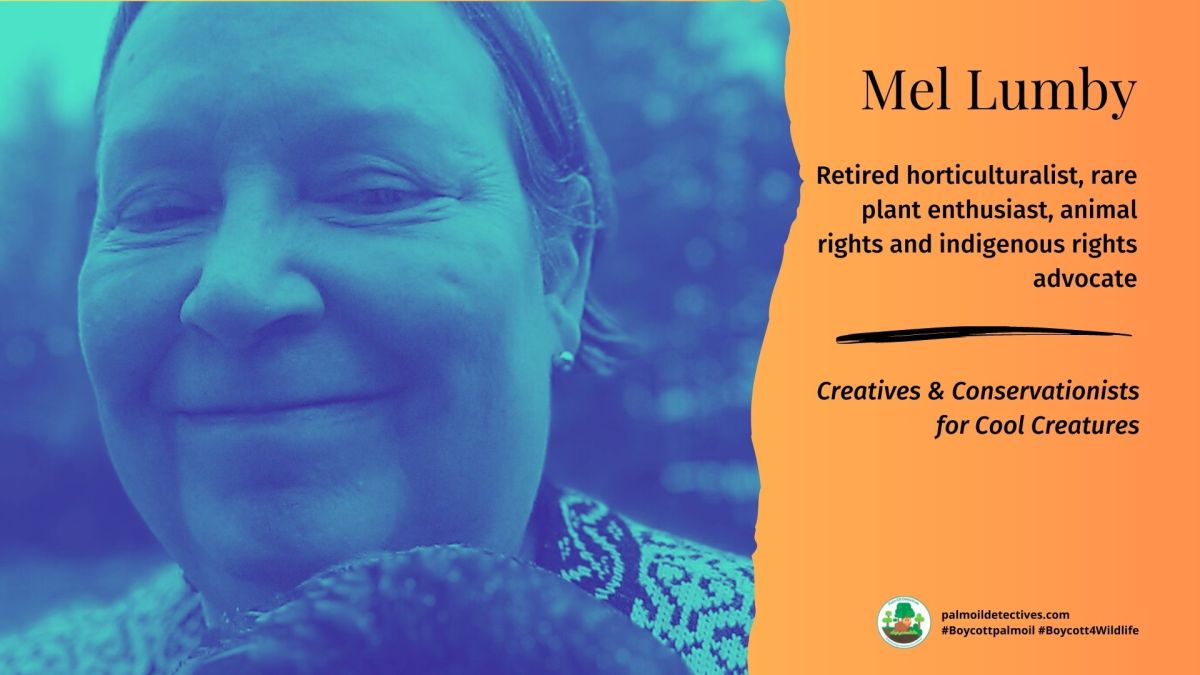Given the widespread destruction of rainforests and native biodiversity caused by oil palm plantations in Southeast Asia, environmental experts and politicians are warning that the move to promote palm oil cultivation in India’s northeastern States and in the Andaman and Nicobar Islands could be disastrous, writes Priscilla Jerbaraj in The Hindu.
#Palmoil has been a disaster for rainforests and #wildlife in #Indonesia and #Malaysia. Now #India is poised to see huge growth in #palmoil #deforestation and likely #extinction. This has activists worried #Boycottpalmoil #Boycott4Wildlife
Tweet
Palmoil has been a disaster for #wildlife in #Indonesia. Now #India’s endangered animals: elephants, leopards, ungulates, monkeys will edge towards extinction. Indians – don’t allow #palmoil #ecocide! Resist and #Boycottpalmoil #Boycott4Wildlife
Tweet
Other concerns include the impact on community ownership of tribal lands, as well as the fact that the oil palm is a water-guzzling, monoculture crop with a long gestation period unsuitable for small farmers. However, the government says land productivity for palm oil is higher than for oilseeds, with the Agriculture Minister giving an assurance that the land identified for oil palm plantations in northeastern States is already cleared for cultivation.
Article written by Priscilla Jerbaraj with inputs from Navamy Sudhish in Kollam, Kerala for The Hindu. Originally published August 29,2021. Read original. Republished under non-commercial re-use.
In a letter to Prime Minister Narendra Modi in 2021, soon after the launch of the ₹11,040 crore National Mission on Edible Oil-Oil Palm (NMEO-OP), Meghalaya MP Agatha Sangma warned that the focus areas were “biodiversity hotspots and ecologically fragile” and oil palm plantations would denude forest cover and destroy the habitat of endangered wildlife. It could also detach tribespeople from their identity linked with the community ownership of land and “wreak havoc on the social fabric”, said the National People’s Party.
Congress leader and former Environment Minister Jairam Ramesh said proposals for large-scale oil palm cultivation had been studied and rejected as part of the technology mission on edible oils in the late 1980s as it was a “recipe for ecological disaster”. He alleged that “the present proposal of course is designed to benefit Patanjali and Adani”, both corporates with interests in edible oil expansion.
“The palm is an invasive species. It’s not a natural forest product of northeastern India and its impact on our biodiversity as well as on soil conditions has to be analysed even if it is grown in non-forest areas. Any kind of monoculture plantation is not desirable,” said Bibhab Talukdar, a biologist who heads the Guwahati-based conservation organisation Aaranyak, advising caution in introducing oil palm.
The Central government insists it is already proceeding on the basis of cautious scientific analysis. A study done by the Indian Council of Agricultural Research recommended 28 lakh hectares across the country where oil palm can be cultivated, out of which only 9 lakh hectares are in the northeastern States, said Agriculture Minister Narendra Singh Tomar.
“This 9 lakh hectares is not being given by cutting forests or other crops. This is land available for cultivation. The other reason is that besides the availability of land and the suitability of climate, in the context of environment too, it will help bring balance,” he told journalists after the Cabinet approved the new Mission.
“There is research going on to increase the production of oilseeds like mustard, groundnut, soyabean, sunflower, and there has been increasing growth in the production of these oilseeds, but if we have to fill huge gap in production versus demand [of edible oils] soon, we will have to venture into crops where production is more. The production of palm oil from one hectare is far greater than the production of mustard oil in the same area. So naturally, though we are promoting the production of other oilseed, the production rate of oilseeds cannot be compared to that of palm oil,” he said. Palm oil currently makes up a whopping 55% of India’s edible oil imports, and the new Mission is intended to move towards domestic production and self reliance instead.





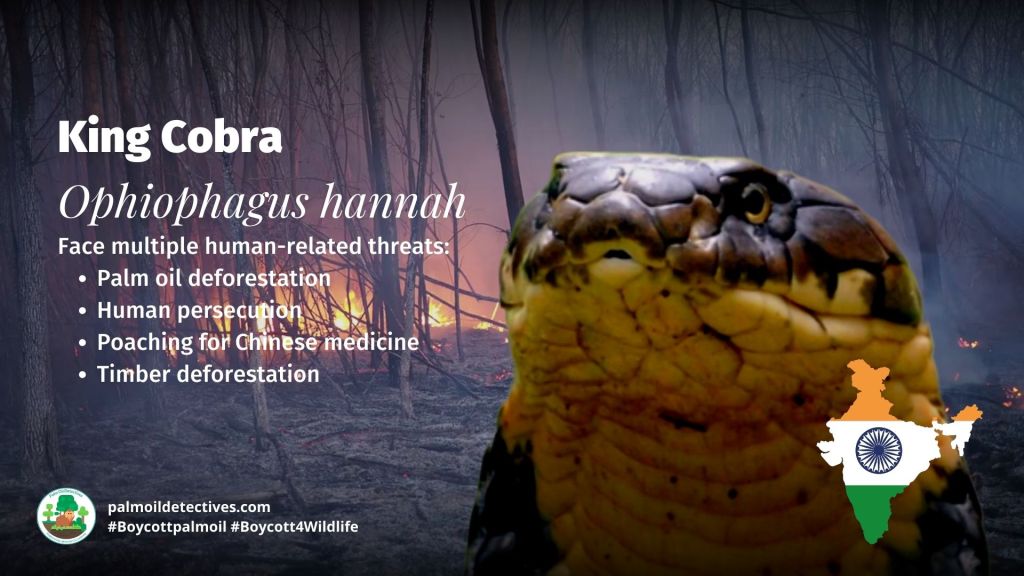





The Andaman and Nicobar Islands have already had some experience with oil palm, including some abandoned plantations on Katchal Island in the Nicobar chain, and a 1,593-hectare area on Little Andaman which was planted more than 35 years ago and abandoned on the instructions of the Supreme Court.
According to a feasibility report prepared by the Indian Institute of Oil Palm Research (IIOPR) based on visits to the islands in late 2018, these can be revived and supplemented by plantations in the grasslands, which make up over 75% of the land area of Little Andaman, Katchal, Baratang, Kamorta and Teressa. “Existing grass in the islands is not of any use and is being burnt every year to avoid snakebites,” said the IIOPR’s feasibility report, which added that the soil and climatic conditions were suitable for oil palm plantation, with high rainfall doing away with the need for irrigation which could suck out groundwater. All five islands are home to tribal communities, including the Jarawa and Onge tribes. The IIOPR suggested that multi-cropping during the first three years of the oil palm’s life cycle would help provide income before the plantation yields returns from the fourth to seventh years.


However, in a January 2019 letter to the Agriculture department, the Chief Conservator of Forests of the Union Territory pointed out that much of these lands are protected or reserve forests and any land use changes would require the approval of the Supreme Court, whose 2002 order had directed that existing plantations, whether of oil palm, rubber or teak, should be phased out. The land should be regenerated to its natural profile without any further introduction of exotic species, it said. In its feasibility report, IIOPR said the Chief Secretary of the islands gave an assurance that “A&N administration would take care of issues relating to Supreme Court Ban and other Committee Reports with the help of the Government of India”.
Although it shares similarly suitable climatic conditions, Sri Lanka has recently disavowed oil palm, with a May announcement to raze existing plantations and ban palm oil imports as the crop has replaced more environmentally friendly and employment generating plantation crops, dried up local streams, and shows signs of becoming an invasive species threatening native plants and animals.
In the parts of peninsular India which already grow oil palm, the response has been mixed. Industry stakeholders in Kerala, which has had widespread experience with plantation crops, are excited about growth prospects via the new Mission. Former Oil Palm India chairman Vijayan Kunissery told The Hindu that a number of rubber farmers are interested in switching to oil palm and expected a revival of the sector by 2022. The State government has identified potential sites for cultivation in Wayanad and Palakkad districts, apart from rejuvenation of existing gardens supported by the new Mission.
In Andhra Pradesh, which currently grows more than 90% of India’s oil palm, farmers depended on bore well irrigation. G.V. Ramanjaneyulu, an agricultural scientist who heads the Hyderabad-based Centre for Sustainable Agriculture, pointed out that oil palm requires 300 litres of water per tree per day, as well as high pesticide use in areas where it is not a native crop, leading to consumer health concerns as well.
Article written by Priscilla Jerbaraj with inputs from Navamy Sudhish in Kollam, Kerala for The Hindu. Originally published August 29,2021. Read original. Republished under non-commercial re-use.
ENDS
An Indian documentary about the dangers of consuming palm oil
Read more: India’s rare and beautiful wildlife is under threat by palm oil deforestation
Contribute in five ways
1. Join the #Boycott4Wildlife on social media and subscribe to stay in the loop: Share posts from this website to your own network on Twitter, Mastadon, Instagram, Facebook and Youtube using the hashtags #Boycottpalmoil #Boycott4Wildlife.
2. Contribute stories: Academics, conservationists, scientists, indigenous rights advocates and animal rights advocates working to expose the corruption of the palm oil industry or to save animals can contribute stories to the website.
3. Supermarket sleuthing: Next time you’re in the supermarket, take photos of products containing palm oil. Share these to social media along with the hashtags to call out the greenwashing and ecocide of the brands who use palm oil. You can also take photos of palm oil free products and congratulate brands when they go palm oil free.
4. Take to the streets: Get in touch with Palm Oil Detectives to find out more.
5. Donate: Make a one-off or monthly donation to Palm Oil Detectives as a way of saying thank you and to help pay for ongoing running costs of the website and social media campaigns. Donate here


